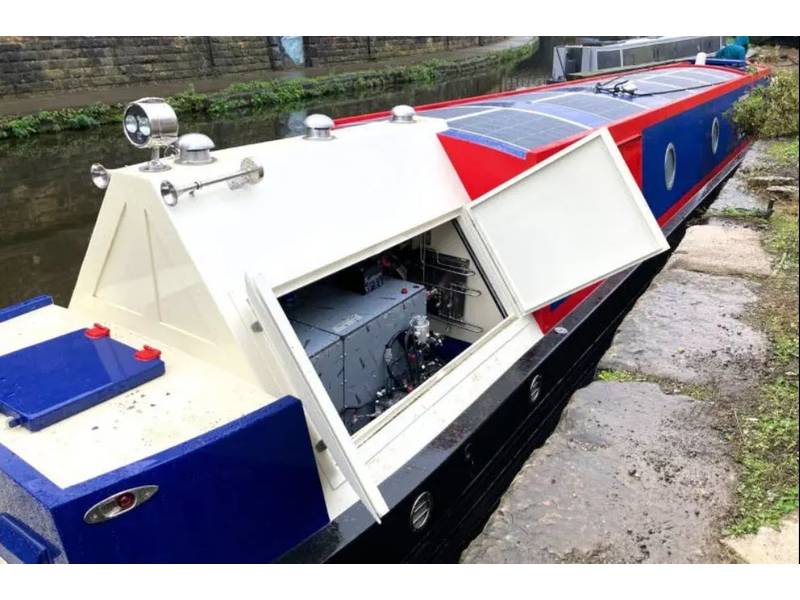Printed Circuit Board Fuel Cell Technology Tested on Narrowboat
Bramble Energy has launched the world’s first hydrogen-electric boat powered by a printed circuit board fuel cell (PCBFC™).
As the lead partner in the HyTime project working alongside custom engine builder Barrus, Bramble Energy has created a demonstration vessel that it says showcases the vast potential of its PCBFC™ technology to quickly and cost-effectively decarbonise the marine sector.

A 57ft narrowboat was launched in Sheffield, UK, where it has successfully completed testing. The fuel cell system has the potential to provide the vessel with approximately 600 miles of range using the 14kg of hydrogen stored onboard, as well as additional power being supplied from solar panels on the boat’s roof to the 22kWh battery system.
The boat has the potential to save each boat using this powertrain technology up to 12 tonnes of CO2 per year.
In 2022, Bramble Energy was awarded Government funding of just under £1 million to develop its hydrogen fuel cell technology as a solution to replace diesel engines in boats.
Bramble Energy explains in a white paper: "The core substrate of Bramble’s PCB fuel cell is a standard PCB laminate, which provides structural integrity and can be considered as a traditional fuel cell’s bipolar plate. In fact, the standard PCB materials fulfil all the typical and complex fuel cell functional roles including gasketing, current collection, sealing and more. These standardized materials are widely used across the PCB industry, and this has resulted in access to significant economies of scale, even at the smallest production and prototype volumes."
Dr Tom Mason, co-founder and CEO of Bramble Energy, commented: “In a short amount of time we have designed, developed, built and launched a working demonstration of our PCBFC™ technology within a marine application. Our solution has the ability to meet a range of power needs and is easily scalable, which is the exact catalyst the industry needs to make a seamless shift to hydrogen to quickly meet emissions regulations and contribute to greener and cleaner waterways.”
Related News

